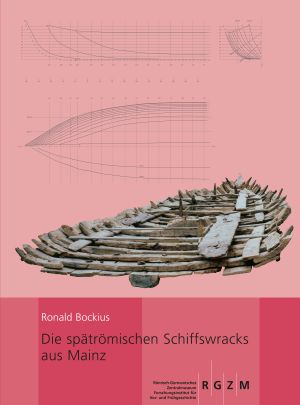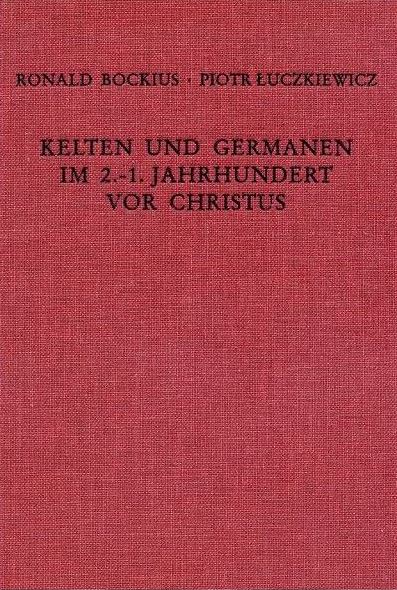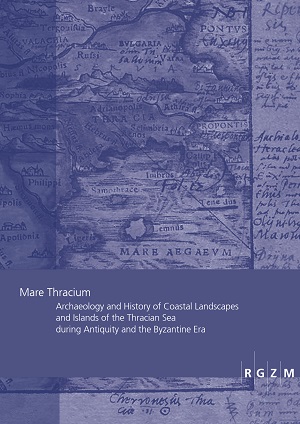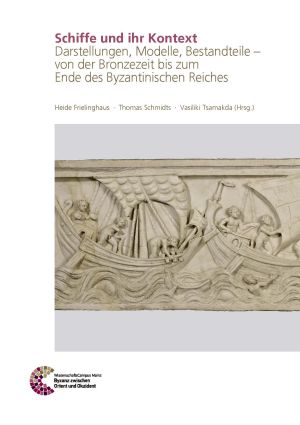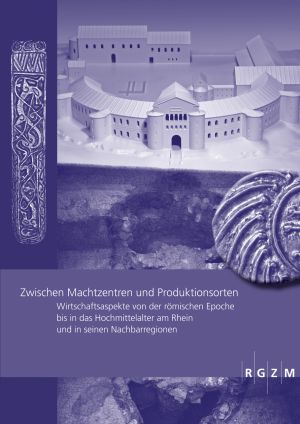Bockius, Ronald
Die spätrömischen Schiffswracks aus Mainz: Schiffsarchäologisch-technikgeschichtliche Untersuchung spätantiker Schiffsfunde vom nördlichen Oberrhein
As the only representatives of their kind, the ship finds from Mainz shed new light on late Roman military history. Their state of preservation provides insight into partly complex boat-building techniques and measures, which reveal links with the Romano-Celtic seagoing ship of north-western Europe; at the same time, Mediterranean know-how is also recognisable. Traces of ancient surveying and construction bear witness to special planning and work organisation achievements. Moreover, nowhere else is there such a comprehensive opportunity for the structural study of Roman belt drive systems and how they interacted with humans.
Designed as an evaluation of the archaeology of ships and the history of technology, and with a comparatively broad scope, the book opens up a new order of the finds, differentiating both chronologically and in terms of ship type. Meticulous documentation in words and pictures forms the basis for plan reconstructions that trace the shape, size, equipment and usability of the vessels.
Kelten und Germanen im 2.-1. Jahrhundert vor Christus: Archäologische Bausteine zu einer historischen Frage
The aim of the study is to investigate the characteristics of the sepulchral representation of the equestrian and senatorial population groups in the defined area and period of investigation on the basis of archaeological-epigraphic evidence. The question pursued is whether there were binding forms of sepulchral representation within these two social groups and of what kind they were. The forms of representation recorded are also analysed and interpreted with regard to their contextual intention and / or intended statement. The material basis of the study is an extensive catalogue of newly edited or so far unpublished sepulchral monuments of both groups of persons.
Mare Thracium: Archaeology and History of Coastal Landscapes and Islands of the Thracian Sea during Antiquity and the Byzantine Era. International Workshop within the Framework of the DFG Project »The Thracian harbour city Ainos in Roman and Byzantine times – the development of a traffic hub in a changing environment«
Despite its peripheral location, the Mare Thracium was an integral part of the Mediterranean world. The wealth of its resources and the rivers connecting to the Thracian hinterland were of great importance. Numerous harbour cities contributed significantly to the development of the region from the Archaic to the Byzantine period and even beyond.
The contributions in this volume originated from a workshop held in Mainz in 2016 as part of the DFG Priority Programme (SPP 1630) »Harbours from the Roman Period to the Middle Ages«. They deal with the natural conditions for seafaring, historical developments, the physical remains of coastal settlements and their harbours, and underwater finds.
Schiffe und ihr Kontext: Darstellungen, Modelle, Bestandteile – von der Bronzezeit bis zum Ende des Byzantinischen Reiches
Seafaring was extraordinary important in Antiquity and the Middle Ages for the economy and the wielding of power. It also provided contact between distant places. Ships were on the one hand decorated and ornamented and on the other hand they were frequently objects of depictions which could range from sketchy graffiti to three-dimensional reproductions. The contexts of the depictions encompass different areas, such as public and private representation as well as religion.
This Volume assembles 18 articles that have been presented on the occasion of an international workshop in 2013. Different groups of material ranging from the period of Bronze Age until the end of the Byzantine Empire were presented as well as the development of ship-building and navigation. The depictions of ships which have investigated scanty until now were the main target of the workshop.
Zwischen Machtzentren und Produktionsorten: Wirtschaftsaspekte von der römischen Epoche bis in das Hochmittelalter am Rhein und in seinen Nachbarregionen
On 12 November 2018, a cooperation agreement was signed in Ingelheim am Rhein between the Kaiserpfalz Research Centre based there and the Roman-Germanic Central Museum, Leibniz Research Institute for Archaeology. With this agreement, the close ties that have existed since the middle of the 19th century between the scientists in Mainz and the researchers of the Imperial Palace in Ingelheim were confirmed in writing. The future cooperation will focus particularly on European economic aspects and topics of supra-regional materials research. The first fruits of this cooperation were presented at interdisciplinary conferences on 12 and 13 November 2018 in Ingelheim and on 28 and 29 November 2019 in Mayen. These events also served as an intensive exchange with scientists from Germany and abroad. The results of both conferences are brought together in this conference volume. In 25 papers, the fundamentals of trade in the Rhineland and its neighbouring regions as well as the processes of the exchange of goods between centres of power, rural regions and production sites in the period from the Roman era to the High Middle Ages are examined from very different perspectives. Both for the large-scale development tendencies and the relationships between different economic regions as well as for the production sites and the marketing routes, the contributions offer trend-setting explanations, fundamental presentations and exceptional descriptions. They form the basis for future research in parts of Europe adjacent to the Rhineland, which is planned within the framework of the cooperation and will be reflected in further conferences.



